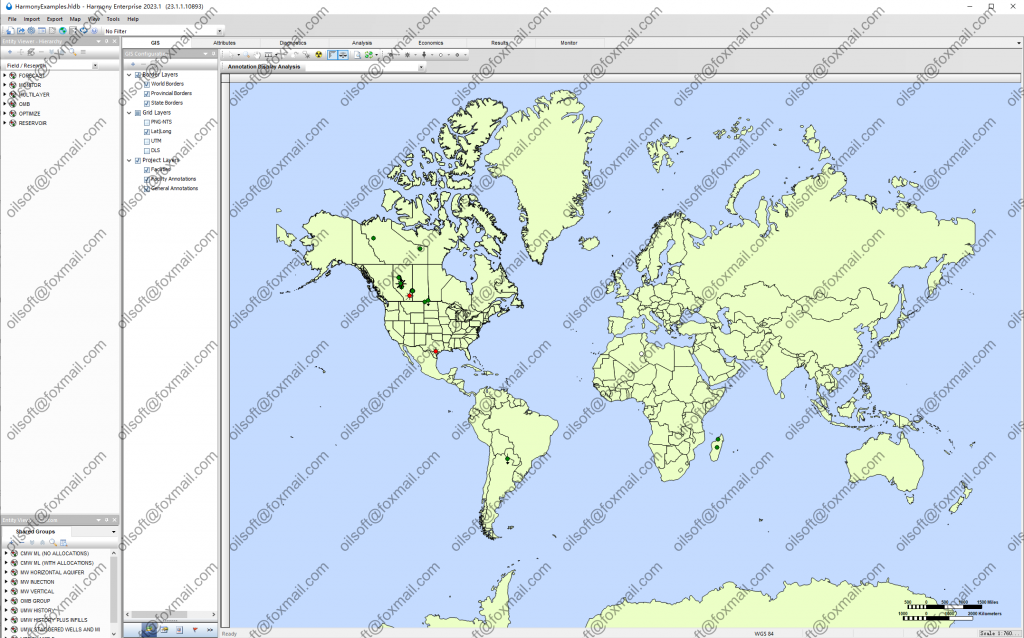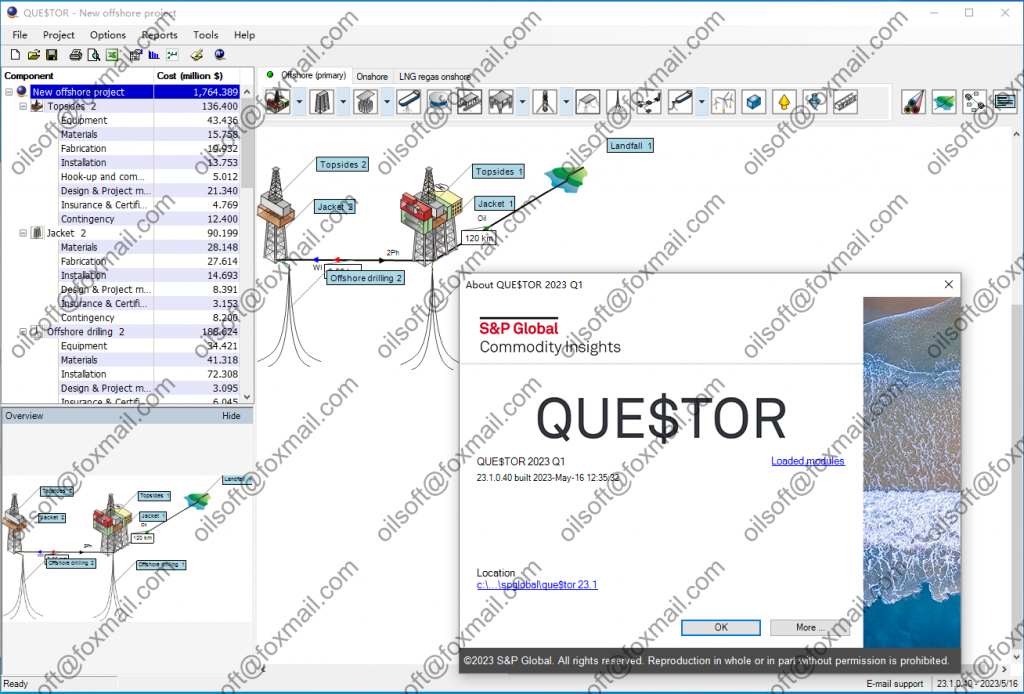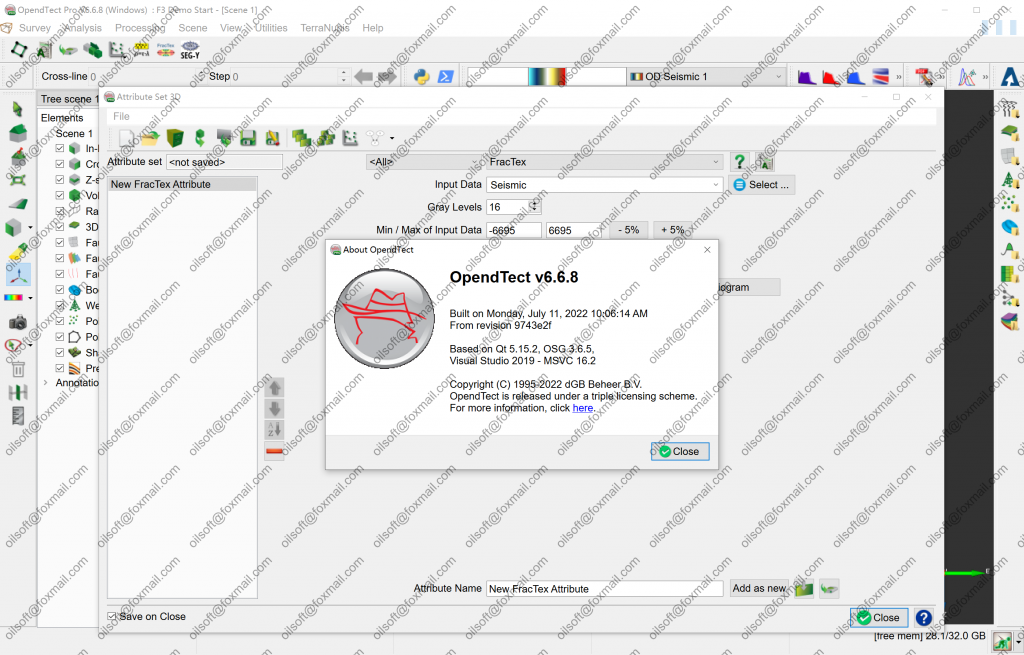
Harmony Enterprise 2023.1 Release Notes (2023/04/17)
Wellhead forecasting for Extended Numerical Models
Wellhead forecasting is now available for Extended Numerical Models (single well and multi-well). Previously, wellhead forecasting was only available for Analytical Models and Numerical Models. With this enhancement, you can incorporate wellbore flow rates and pressure losses into Extended Numerical Models, forecast into the future using a specified wellhead pressure constraint, and include changing wellbore configurations in forecasts to compare potential wellbore intervention strategies.
Quickly produce sensitivities on Extended Numerical Model forecasts
Extended Numerical Model calculations previously ran from the beginning of production. Now, if only forecast parameters have changed since the model was last run, only the forecast period is recalculated, making the forecast optimization workflow faster. This enhancement applies to all Extended Numerical Models (single well and multi-well, conventional and unconventional).
Anisotropy for Conventional Extended Numerical Models
Define different permeabilities in the x- and y-directions for Conventional Extended Numerical Models (single-well and multi-well). You can achieve better history matching and create more accurate forecasts for the plays where permeability depends on direction with this enhancement.
Changing skin with time for Extended Numerical Models
The option to change skin multiple times throughout well production has been added. You can model skin changes during the wellвАЩs production history and during the forecast. Changes in skin can be added to models using a ramp or step change. This enhancement applies to all Extended Numerical Models (single well and multi-well, conventional and unconventional).
Different geomechanics for matrix and SRV regions for Unconventional Extended Numerical Models
Different geomechanics for matrix Geomechanics behavior for Unconventional Extended Numerical models has been available for several releases. This means permeability and formation compressibility can vary as functions of pressure. In previous versions, permeability and compressibility variations with pressure were modeled as the same in the matrix and SRV region. You can now set models up to use different variations of permeability with pressure between the matrix and SRV regions. This enhancement helps with more accurate modeling of the fracture network response during depletion and SRV regions for Unconventional Extended Numerical Models.
Performance Improvements for Common Operations
We strive for continuous enhancements to your user experience in Harmony Enterprise. Several improvements have been made to reduce load times of key day-to-day operations for Harmony Enterprise users. Specific improvements have been made for:
Switching between entities (60% improvement)
Loading and saving URM worksheets (40% improvement)
Loading and saving Optimize worksheets (25% improvement)
In a low latency environment users can expect to see improved speeds in the above areas.
We have also added a troubleshooting log feature to capture network performance metrics that impact Harmony Enterprise operations.
Minor improvements and resolved issues from Harmony Enterprise 2022.3
General
Language compatibility issues with using вАШqвИЮвАЩ have been resolved.
Improved error messaging and troubleshooting steps have been added for if you encounter issues importing through Direct Connect (Enerdeq and IHDC).
VRR worksheets now remember user customizations.
When using вАШToggle Color by Entity or by DatasetвАЩ in Diagnostics, Static Pressures will also show as unique colors.
Issues with pasting a deviation survey onto an existing deviation survey have been resolved.
Importing
Datum information is now imported from Enerdeq and IHDC (The Hub) if it is available.
When using the database import with Aries analyses, duplicate calculated ratios are no longer added.
The вАЬImport WarningвАЭ dialog will now appear each time a user is importing lower resolution data, not just once per session.
Reservoir
вАЬUse Corrected Pseudo-TimeвАЭ will now be an option in URM plots by default.
The telf value shown on the URM plot is now also available in the Results Viewer as (telf)plot.
When performing a rate-controlled wellhead forecast on a numerical model, the (√Њtf)calc is now populated in the Tables tab.
Entering Liquid Level and Average Liquid Gradient values will now only be required on an Extended Numerical Model if your forecast includes a pumping wellbore configuration.
The Defaults Manager populates the correct data from the URM (Vert w Fracture) to the Unconventional Numerical Model.
The history match and forecast persist on analytical or numerical models when an Optimize Configuration is modified.
The Automatic Parameter Estimation Average Error has been added to the Results Viewer for analytical and numerical models.
The default gridding values for the Vertical Numerical models are now finer for more accurate results.
Harmony Enterprise 2022.3 Release Notes (2022/12/06)
Extended Numerical Models (for wells, scenarios, and layers) within Reservoir
Prior versions of Harmony Enterprise included multi-well numerical models for groups of wells. You can now also create these enhanced numerical models on individual wells, scenarios, or layers. This new model is called the Extended Numerical Model. Results from Extended Numerical Models are also available for use in economics analyses, can be viewed in Production vs Forecast and Liquid Loading monitors, displayed in Results Viewer, and exported to Analytics Explorer.
Some advantages of using the Extended Numerical Models (as compared to using the original numerical models):
Ability to create multilayer models
(For Conventional models) flexible boundary shape
(For Unconventional models) ability to extend the reservoir beyond the length of the well
Calculation results are drawn on the plots while the calculation is running
Indicator lines allow shaded plots to easily be displayed at any time step
Flexible gridding options
Optimize Enhancements:
Advanced Forecast вАУ Extended Numerical Model Support
Create and compare multiple Extended Numerical Model forecasts. Sensitize potential forecast conditions (such as sandface or wellhead flowing pressure, production rates, and wellbore configurations) to maximize your wellвАЩs production. Applies only to horizontal multi-fractured Extended Numerical Models.
Advanced Forecast вАУ Numerical model-based IPR
Model-based inflow performance relationships (IPRs) are now available for Unconventional Numerical Models. Leverage your Extended Numerical Model to generate IPR curves at any point in your wellвАЩs forecast using Advanced Forecast. Applies only to horizontal multi-fractured Extended Numerical Models.
Choke support for TPC and Flowing Gradient
Evaluate current and hypothetical wellbore chokes in the Flowing Gradient and Inflow Performance Relationship / Tubing Performance Curve (IPR/TPC) worksheets. Optimize configurations can support the addition of chokes for single-phase gas and multi-phase systems. Available choke correlations include: Szilas, Ashford-Pierce, Perkins, Gilbert, Achong, Baxendell, and Ros. Harmony Optimize calculates both critical and sub-critical flow across chokes.
Minor improvements and resolved issues from Harmony Enterprise 2022.2
General
Units for KB elevation values coming from IHDC have been fixed.
Multiple datums are no longer displayed when there are multiple perforations.
Harmony no longer crashes when a default printer has not been assigned.
The Decline Forecast Resolution is now saved into the Templates in the Analytics Explorer connector.
Extended Colors can be used in an Azure environment
Errors regarding вАШfailure to saveвАЩ no longer appear when switching between wells if no changes have been made.
Size and color of well symbols can now be customized in Spatial Explorer
Added a convenient way to gather troubleshooting details that can easily be sent to the support team to improve their ability to assist.
In case the Documents directory is not accessible, an option has been added to save log files in the directory specified by the user rather than in Documents.
Imports and Exports
In prior versions of Harmony Enterprise, when new production data was loaded, some decline parameters were recalculated, specifically updating their EUR and cumulative production. However, when the Append or Look Back options were used this sometimes resulted in incorrect values being stored in the database. Now, when production data is loaded, the decline parameters will not be recalculated and the values in the database will remain unchanged. Decline parameters will only update when the user loads the well(s) or performs Refresh Results for Declines.
Forecast
You can automatically Refresh Results for Decline. Set decline refresh preferences in the Options dialog. The refresh is executed from command line and can be added to the Windows Scheduler.
Reservoir
Wellhead Forecasting can be run on Analytical and Numerical models when the history match portion has the flow path set to gas lift.
When performing a rate-controlled wellhead forecast on a numerical model, the incorrect (ptf)calc value is no longer displayed in the Tables tab.
The Default Manager correctly transfers values from a URM Vertical with Fracture to Numerical Models
Analytical models use the correct wellbore configuration after changes to the wellbore configuration date without having to refresh the project.
Calculated Reservoir pressure is now displayed on Well Rate Time plots for Conventional and Unconventional numerical models.
In the Unconventional Numerical model, the limit for MinsrvXY gridding parameter was changed and an Extra Fine gridding option was added. This can be used to address oscillating forecasted rates for oil wells with low permeability.
Optimize
Optimize analyses using Pump Performance Curves will now extrapolate to a zero-head from the highest inputted rate.
The model history match is recalculated on Advanced Forecast after removing water volumes from the Production Editor
In Flowing Gradient, the oil/condensate rates are now displayed based on the gas type in the Properties Editor.
The functionality of Refresh Results for Optimize can be now executed from command line and can be added to the Windows Scheduler.
















